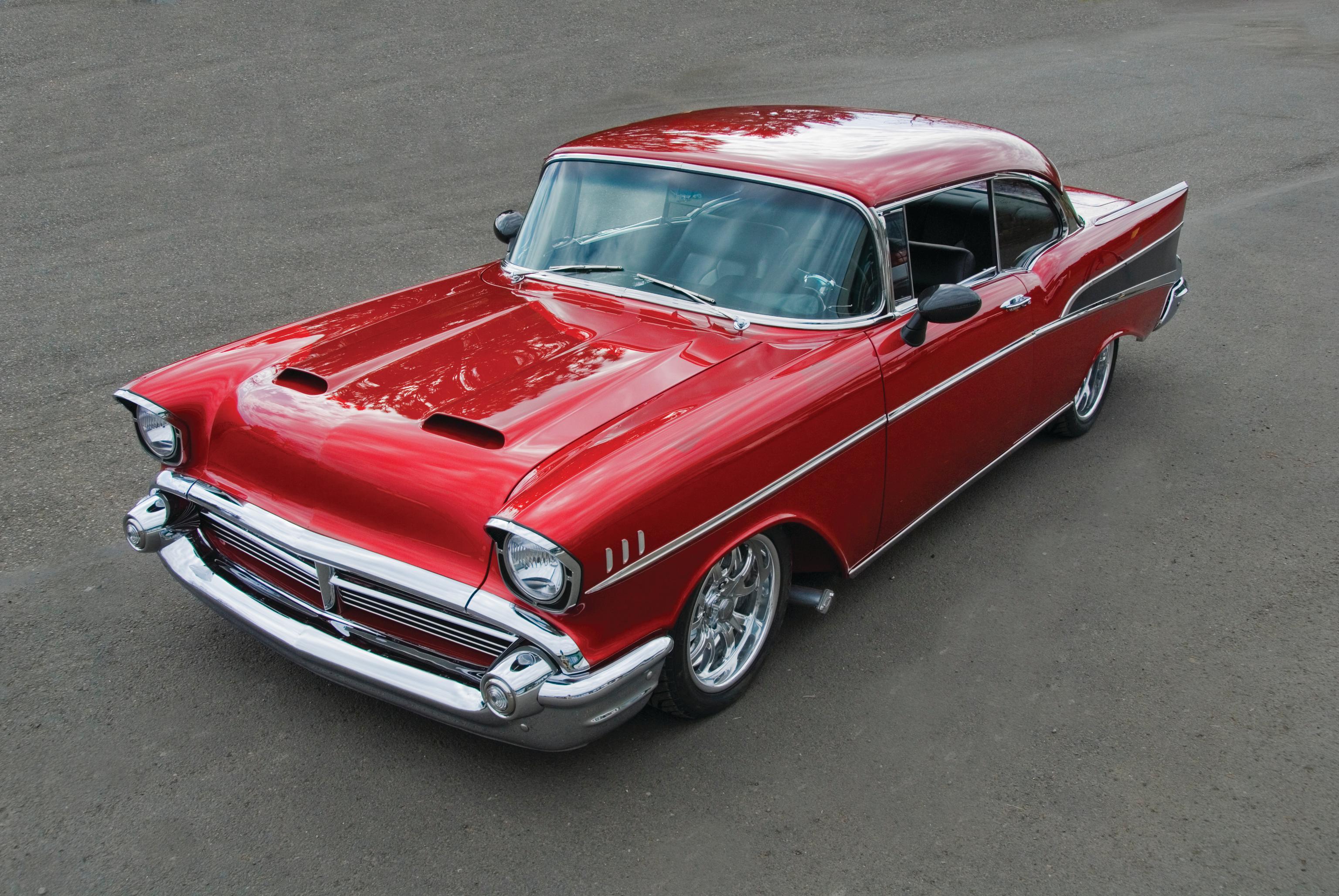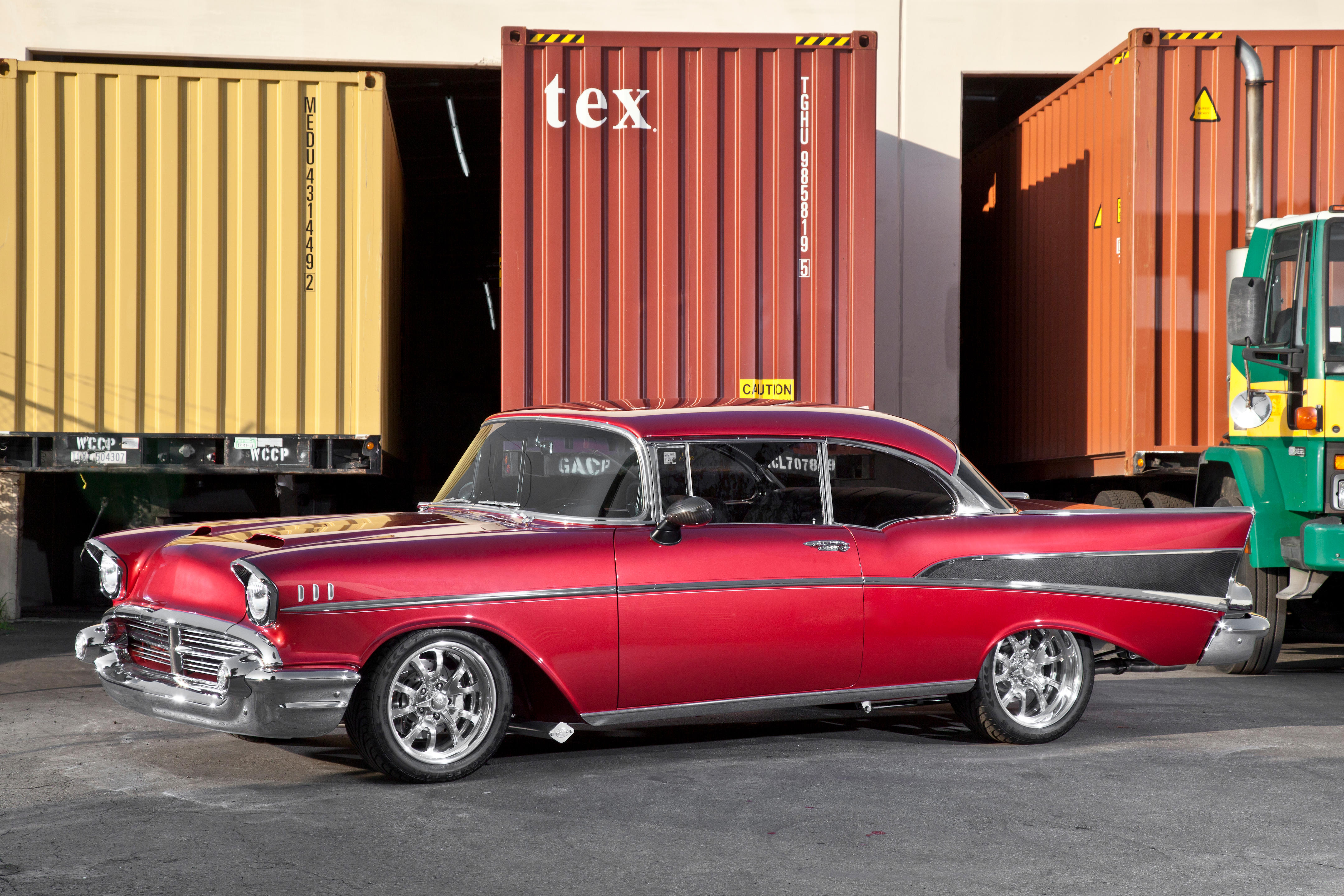The Iconic 1957 Chevrolet Bel Air Coupe: A Classic American Muscle Car
The 1957 Chevrolet Bel Air is one of the most iconic American cars of all time. This classic muscle car embodied the exuberant styling and powerful V8 performance that came to define American cars in the late 1950s. In this article, we’ll take a deep dive into the history, design, performance, and legacy of the 1957 Chevy Bel Air Coupe.
The History of the 1957 Chevrolet Bel Air
The Bel Air model had been around since 1950, positioned by Chevrolet as a premium trim line above their base 150 model. By 1955, Chevrolet had restyled the Bel Air into the archetypal 1950s American car, featuring bold chrome grilles, sweeping tailfins, and powerful V8 engines under the hood.
For 1957, Chevrolet thoroughly redesigned the Bel Air from the ground up. The 1957 model featured a lower, wider stance and even more dramatic styling cues like a massive front grille and long, sculpted tailfins. Under the hood, base models came with Chevrolet’s 283 cubic inch V8 producing 185 horsepower, while optional fuel-injection could boost output to 283 hp.
The 1957 Bel Air was an instant hit, selling over 652,000 units that first model year. Its timeless styling and ample power made the 1957 Bel Air an American icon of the postwar boom years.
The 1957 Bel Air’s Unmistakable American Style
The 1957 Chevy Bel Air was styled to embody the over-the-top optimism and flair of 1950s America. Up front, the massive grille flanked by quad headlights immediately grabbed your attention. The long, sweeping hood hinted at the power that lay underneath.
From the side view, the Bel Air’s profile was low and wide, with an expansive greenhouse offering excellent visibility. Distinctive chrome spears ran along the front fenders and doors, complementing the chrome accents around the windows.
But the real showstopper was in the back, where Chevrolet designers placed bold, sculpture-like tailfins that soared upward from the rear quarters. The rear window was wrapped by more chrome, meeting at a third chrome spear running across the back.
Finished off with flashy custom options like two-tone paint, chrome wheels, and whitewall tires, the 1957 Bel Air was the definition of American auto exuberance in the 1950s.
Potent V8 Performance
In 1957, horsepower was king, and Chevrolet crammed as much as they could into the Bel Air’s hood. The standard engine was Chevrolet’s recently enlarged 283 cu-in V8, boasting 185 hp – a healthy jump over 1956’s 162 hp. For even more performance, buyers could spec the legendary Ramjet fuel injection system to boost power to a stunning 283 hp.
This fuel-injected engine turned the ’57 Bel Air into a true hot rod. Contemporary road tests by Motor Trend clocked 0-60 mph in just 7.5 seconds – very quick for the time – with a top speed of 122 mph. Few family sedans could keep pace with the souped-up Bel Air.
Handling wasn’t forgotten either, with a lowered suspension, stiffened springs, and heavier-duty brakes available to keep the Bel Air planted through curves. While not as agile as true sports cars of the era, the Bel Air could hold its own in both straight-line speed and cornering ability.
Bel Air Impala and Nomad Wagons
Within the Bel Air lineup, Chevrolet offered several interesting body styles and trim packages. At the top end sat the Bel Air Impala, available as a coupe or convertible, dripping with chrome and V8 power. For buyers who needed room for the whole family, Chevrolet created the uniquely styled Bel Air Nomad station wagon.
The Nomad’s swooping, pillarless roof extended past the rear cargo area, ending in a crisp tailfin that made it appear like a hardtop coupe from the side. Powered by the fuel injected 283 V8, the Nomad delivered sports car speed in a family wagon package.
For NASCAR stock car racing, Chevrolet introduced the Bel Air Sport Coupe in 1957. Featuring a shorter wheelbase, aluminum body panels, and a 315 hp V8, the Bel Air Sport Coupe was purpose-built for the track.
The Bel Air in Popular Culture
The 1957 Chevy Bel Air’s handsome looks and performance made it an instant pop culture icon across America. The Bel Air convertible served as the perfect chariot for the All-American teenage lifestyle portrayed in movies like American Graffiti.
The rebellious rock ‘n roll attitude was amplified when James Dean drove a brooding black ’57 Bel Air Coupe in the film Rebel Without a Cause. And what could be more American than the red Bel Air convertible that shuttled around Elvis Presley in his film Loving You?
Even decades later, the ’57 Chevy remains etched in the American psyche through die-cast model cars, collectibles, and association with 1950s culture. For many, the 1957 Bel Air epitomizes the confidence and brashness of mid-century America.
Collector Interest and Values Today
Given its reputation as an automotive icon, it’s no surprise that the 1957 Bel Air is highly sought-after by collectors today. Excellent restored examples can fetch prices well over $100,000 at auction. Even worn-out project cars command lofty prices, assuming most of the original parts are intact.
The Nomad wagon and rare solid roof Sport Coupe are particularly valued, given their short production runs. Concours-winning show cars often set record prices, changing hands for hundreds of thousands of dollars.
Restoring or maintaining a 1957 Bel Air can be expensive, as some trim and mechanical parts are challenging to source. But for many enthusiasts, the 1957 Chevy Bel Air’s style and performance remain well worth the effort.
The ’57 Chevy’s Lasting Legacy
Some cars are more than the sum of their parts, entering into the cultural zeitgeist in a way that ensures their reputation for generations. The 1957 Chevrolet Bel Air is just such an automobile. Its flamboyant style and V8 power perfectly captured the mood of 1950s America.
Six decades later, the ’57 Chevy still looms large over the classic car hobby. As the Collectible Classic car price guide notes, “No collection of 1950s automobiles is complete without a ’57 Chevy.” For both vintage car lovers and enthusiasts of Mid-Century Americana, the Bel Air remains an enduring symbol of postwar exuberance.
Frequently Asked Questions
What made the 1957 Bel Air design so iconic?
The 1957 Bel Air featured exaggerated styling cues like massive grilles, long hoods, sweeping side spears, and soaring tailfins that embodied the flashy optimism of 1950s America. The two-tone paint, abundant chrome, and flashy custom options added to its iconic look.
What size and type of engines were available in 1957 Bel Airs?
The standard engine was a 283 cubic-inch small-block V8 producing 185 horsepower. Optional Ramjet fuel injection boosted output to 283 hp. Larger displacement V8s up to 348 cubic inches were also available.
How was the handling on the 1957 Bel Air?
Optional upgrades like lowered suspensions, stiffened springs, and heavy-duty brakes endowed the Bel Air with surprisingly agile handling for a big 1950s sedan. While not a sports car, it could hold its own against many classics of the era.
What were some of the most memorable movie appearances of 1957 Bel Airs?
The black 1957 Bel Air coupe driven by James Dean in Rebel Without a Cause and the red convertible Elvis drove in Loving You were two of the most iconic ’57 Chevy movie cars. A Bel Air was also featured prominently in American Graffiti.
Why are 1957 Bel Airs so valued by collectors today?
Due to its reputation as an American automotive icon of the 1950s, excellent restored or all-original 1957 Bel Airs can fetch over $100,000 at auction now. Its style, performance, and history make it highly prized by collectors.








